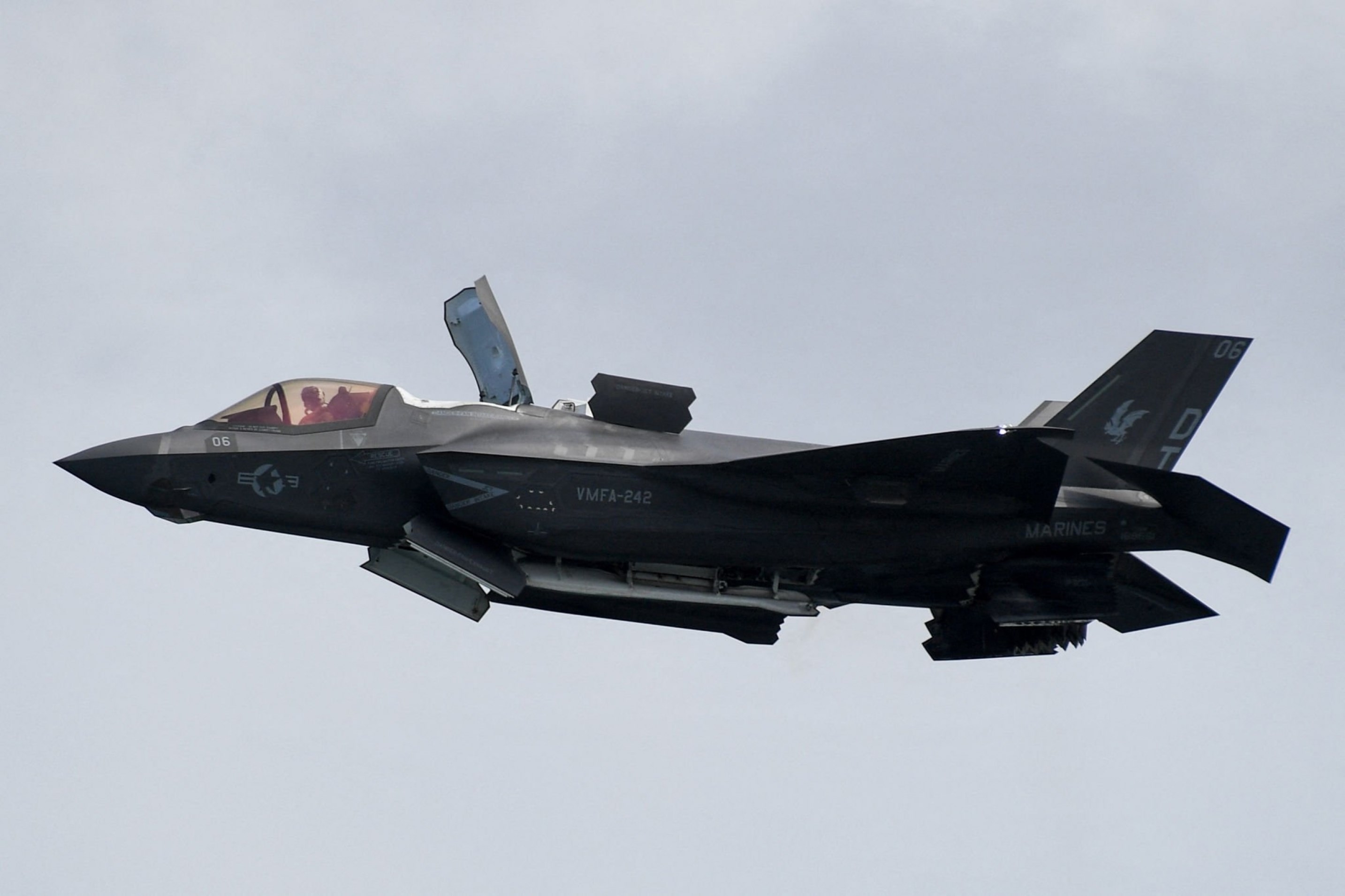Iran's radars monitored multiple F35 jets in Gulf: Iranian Official
The Iranian Army's Air Defense radars have detected and monitored the activity of F-35 jets over the Gulf, highlighting the improved capabilities of Iranian systems.
-

A US Marine Corps F-35B Lightning II, a short takeoff and vertical landing (STOVL) version of the aircraft, flies past during a preview of the Singapore Airshow in Singapore on February 13, 2022. (AFP)
Iranian air radar systems detected and monitored the flight of American F-35 fighter jets in the Gulf, to the south of the country, Brigadier General Reza Khajeh announced.
The commander of operations of the Iranian Army Air Defense said, "Over the past days, several of these planes were flying over the Persian Gulf and were fully monitored by our radars from the moment they took off."
The army official added, "All radars located in the south of the country were monitoring these planes."
Khajeh emphasized that Iranian radars detect all enemy flights beyond the Gulf region, in the Strait of Hormuz, and the Sea of Oman.
The Brigadier General pointed to the accuracy of Iranian air detection systems saying, "There has been no flight that was reported by our eavesdropping systems but not detected by our radars."
The Lockheed Martin F-35 Lightning II, known as the F-35, represents the pinnacle of the Pentagon's aircraft arsenal. Designed for stealth and multirole combat, its advanced capabilities provide a strategic edge, while its "stealth" feature has been a central part of the F-35 program, and its detection by Iranian radars highlights the advancement is Tehran's defense capabilities.
The United States drastically increased its military presence in the Gulf, when US Secretary of Defense Lloyd Austin ordered the deployment of an Amphibious Readiness Group/Marine Expeditionary Unit to the region in late July.
Additional deployed forces include Marines troops, F-35s, F-16s, and the guided-missile destroyer USS Thomas Hudner (DDG-116). This was followed by the arrival of the USS Bataan and USS Carter Hall warships in the Red Sea on August 6, carrying over 3,000 military personnel.
The Biden administration says that these moves come to ensure the safe passage of international trade vessels from Iranian activity in the area. However, Tehran said the US presence in the Gulf hinders its security objectives, as smugglers find routes of escape under US protection.
Read more: US acts as 'master of world's pirates': Iranian Commander
Excellent homegrown systems
Rear Admiral Habibollah Sayyari, the deputy chief of the Iranian Army for Coordination, stressed that the army is ready to fulfill its duty and tasks by utilizing its locally-produced hardware and specialized Iranian personnel.
“Today, we have secured invaluable achievements in the Islamic Republic of Iran Army in the fields of drone, electronic warfare, cyberspace, and other new technologies,” Sayyari said, vowing adamant determination to guard and increase future achievements.
“We must definitely keep ourselves ready for the future,” he added. “What we have today does not meet the needs of the future and we must meet our own needs with regard to the future.”
On August 14, the Iranian Ministry of Defense and Armed Forces Logistics (MODAFL) featured a variety of weapons and defense systems, some of which were revealed for the first time, and put up for sale at the Army 2023 International Military Technical Forum.
Read more: Iran shows advanced production capabilities at Russia's Army 2023 Expo

 3 Min Read
3 Min Read








